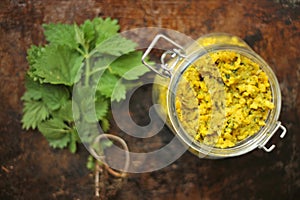Stinging nettle Urtica dioica has been a staple in herbal medicine since ancient times.
Ancient Egyptians used stinging nettle to treat arthritis and lower back pain, while Roman troops rubbed it on themselves to help stay warm 1.
Its scientific name, Urtica dioica, comes from the Latin word uro, which means ââ¬Åto burn,ââ¬Âàbecause its leaves can cause a temporary burning sensation upon contact The leaves have hair-like structures that sting and also produce itching, redness and swelling
|


